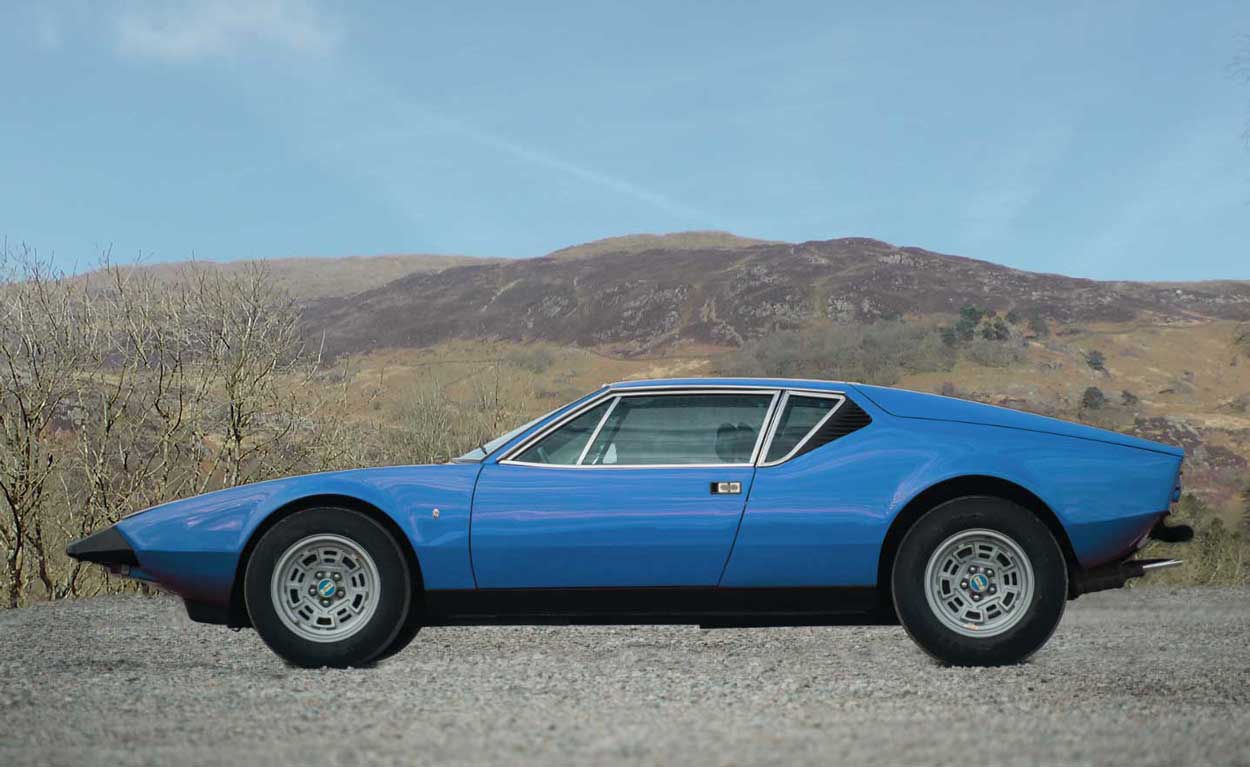De Tomaso Pantera
Listen to the engine of a De Tomaso Pantero being put through it's paces. Click on the start button to listen.

De Tomaso is another of those boom and bust car manufacturers that has had high spots but multiple bankruptcies as well. At one stage they owned Maserati, and were responsible for the Biturbo (about which the best said the better) and they also owned the Moto Guzzi motorbike company for a while but several liquidations later it is now in the hands of a company that plans to build cars in China.
However, the company was founded in 1959 by Argentinian racing driver and businessman Alejandro de Tomaso who fled to Italy in 1955 after being implicated in a plot to overthrow Juan Peron. He was not particularly successful as a racing driver – in the four Formula One Grand Prix that he raced in he failed to collect any points at all – but he then turned to manufacturing cars, principally high-performance sports cars and racers. By 1971 he was ready to make a supercar.
The problem is that designing and building supercars is very expensive. By this time De Tomaso had built up a substantial industrial holding but he sold a major part of it to Ford, who agreed to help him build his Pantera – Italian for 'Panther'. By 1971 his dream was realised.
The Pantera was a mid-engined two-door coupe with a huge 5700 cc V-8 engine mated to a five-speed gearbox. In road trim this engine pumped out 330 brake horsepower and the GTS version which was available from 1973 had even more power at 350 brake horsepower. This model was capable of 170 mph with acceleration of nought to 60 in 5.2 seconds.
There was air-conditioning, electrically operated windows, and even buzzers that sounded when a door was opened! There was also an electrically operated cigarette lighter but many an arm was burnt when it was rested on the centre console that held it, accidentally setting it off.
The boot would take plenty of luggage and it could be removed to give easy access to the engine for repair or maintenance. Sadly both of these were regularly necessary.
This was a supercar, but very much an economy one. And it showed. Rust proofing was virtually non-existent; but then that was common to most Italian cars of the day. body panel fit was poor. The car developed a reputation for unreliability, and rockstar Elvis Presley even fired a gun at his because he couldn't get it to start. The engine note had a loud raucous snarl to it. The cabin was uncomfortable and cramped, and roadholding was variable at best. However quality improved dramatically after Ford took more of an interest in it and more than 7000 cars were sold before production ended in 1993.